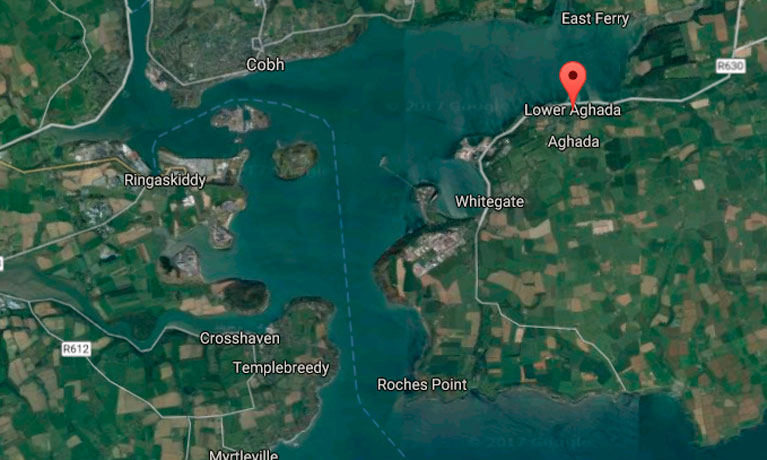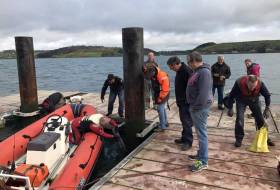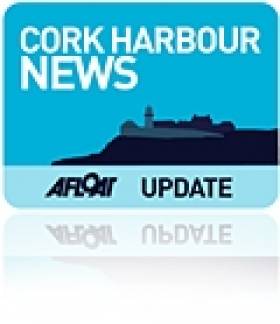Displaying items by tag: Aghada
Lower Aghada Pontoon Reinstalled for Boating Season
The Lower Aghada pontoon has been reinstalled for the coming boating season in Cork Harbour.
Local community efforts in Aghada in 2011 led to an upgrade in the underused and deteriorating pier. It is now a popular Cork Harbour destination for boaters.
These efforts led to the Port of Cork and Cork County Council co-operating with the community in a €350,000 upgrade of their pier which has seen it developed with seasonal pontoon installation as a new destination for visiting boats in the lower harbour. More on this from Afloat.ie in 2011 here.
 Lower Aghada is on the eastern shore of Cork Harbour Image: Google Maps
Lower Aghada is on the eastern shore of Cork Harbour Image: Google Maps
Minister for the Marine Simon Coveney, in his address to the participants, emphasised the importance of the maritime sector and his determination to oversee a major growth in added value for the fishing industry.
The very successful Summer School on Friday 10th June on the theme 'Recreation in a Working Port' saw 8 speakers address an audience of 60+ representatives from a wide range of interests on topics ranging from the history and heritage of the harbour, its potential for recreation and its presence in art an imagination . Key speakers included Louis Duffy of Cork County Council, who presented the Council's hot off the press Cork Harbour Study, Arend Lambrechtsen from the Netherlands, Jim Murphy of the Passage West & Monkstown Harbour Users' Group, Clare Wright of CAAN, who outlined the exemplary programme for development of canoe trails in Northern Ireland, Josephine O'Driscoll of Failte Ireland and Ryan Howard of SECAD, the Leader group which covers the harbour area. Session chairmen were Cathal O'Mahony of UCC's Coastal and Marine Research Centre (CMRC), who set Cork Harbour in its place in the world, Cork City Council's Damien O'Mahony and Tom MacSweeney who led the question and answer session. The event concluded with Seamus Harrington reading his poem Blind Harbour.
Pádraig Ó Duinnín outlined the journey undertaken by Meitheal Mara in arriving at the promotion of their first Summer School. The event was organised by Marina Sheehan of Meitheal Mara in the splendid boardroom of the Port of Cork overlooking their new city-centre marina.

























































